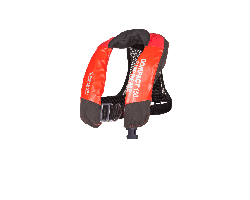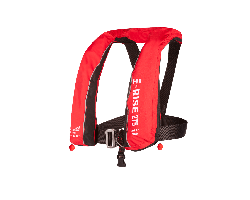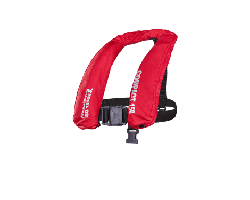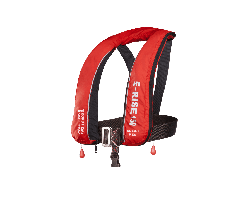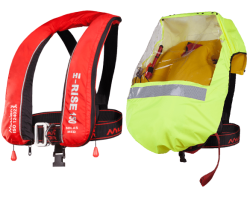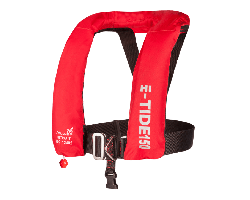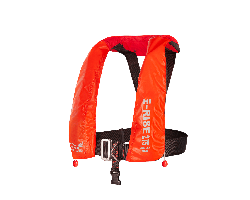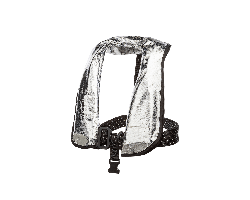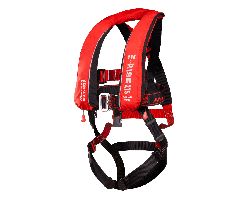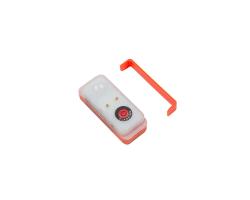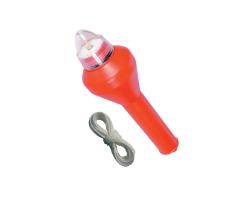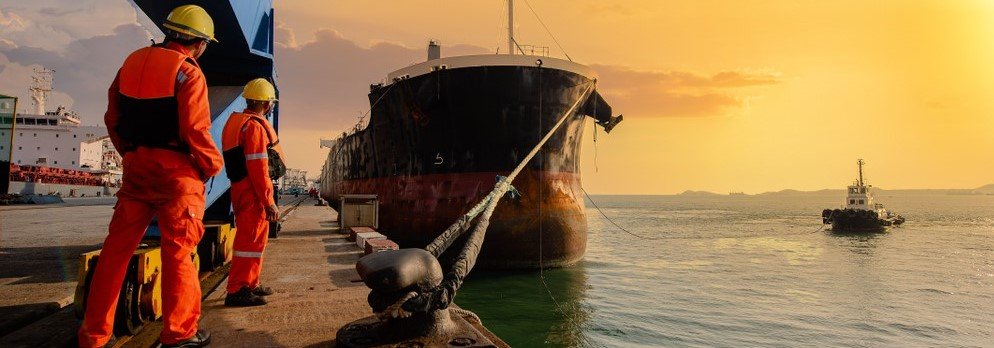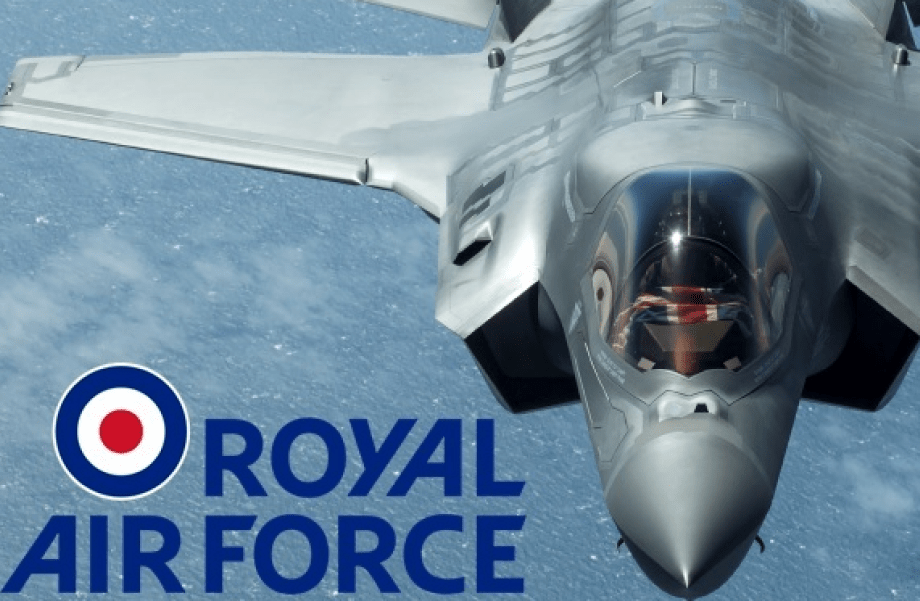Stay Safe on the Water: The Importance of Choosing the Right Lifejacket

Introduction
This content provides information about lifejackets, including their purpose and legal requirements. It also highlights different types of lifejackets and their buoyancy levels, as well as standards for lifejackets sold in the UK and Europe. The article emphasises that lifejackets are essential safety equipment that can help save lives. Including situations where individuals may be unconscious or unable to help themselves in the water. It also provides information about new regulations that require all relevant domestic passenger vessels operating on Category B waters to carry lifejacket for 100% of persons onboard.
Lifejackets
A Life Jacket is a PFD (Personal Flotation Device) used to help force someone to the surface of the water, should they become submerged. Each lifejacket is measured in 'buoyancy'. Bouyancy is the force that pushes a person to the surface of the water, and is measured in 'Newton'. For example, 10 Newton corresponds corresponds to a buoyancy of 2.2 pounds, or 1kg. A person of 220 pounds (100kg) — weighs only 11 pounds (equal to 5kg) in the water.
The lifejacket's in-water perfomance to force the wearer to the surface of the water acts as a safety measure to help minimise the risk of drowning to an unconciouous casualty. This is done by forcing the casualty onto their back, enabling them to breathe — reducing the risk of unconcious drowning due airways being submerged when in the water. Lifejackets, are commonly known as life saving devices. Due to the fact that they not only assist as a 'buoyancy aid', but function as a piece of life-saving equipment that fully supports you in the water due to it's design.
How to Spot a Good Quality Lifejacket
When purchasing a lifejacket, it's crucial to look for specific features that meet legal maritime standards and ensure the wearer's safety in various professional and commercial settings, such as commercial fishing or offshore work. These characteristics are essential for both legal compliance and practical functionality. As an example, we will look at two different types of Mullion Lifejackets: The Mullion Compact 150 Supreme Lifejacket, and the Hi-Rise 275 SOLAS Lifejacket - Regular.
Compact 150 Supreme Lifejacket - Mullion
The Compact Supreme 150 Heavy Duty Wipe Clean Life Jacket is ideal for commercial fishing and offshore construction work. It features high abrasion-resistant fabric with Tektor fabric for added protection. The jacket fits high on the chest and is lightweight with no snag hazards, providing maximum safety and flexibility. The advanced safety features include readiness indication and servicing information for total assurance. A reliable lifejacket that offers a good amount of protection in tough conditions due to it's safe, yet functional design.
This lifejacket provides a minimum buoyancy of 150 Newton, meaning it is approved certain international standards such as EN ISO 12402-3 : 2006 +A1: 2010 for inflatable lifejackets performance level 150 and EN 396 / EN ISO 12402-3: 150N Life Jackets "Have buoyancy of no less than 150 Newton for the average adult. This level is intended for general application or for use with foul weather clothing."
Compared to the Regular Compact 150 Model, the Supreme Compact 150 has additional / advanced safety and function, such as the durable 'Wipe Clean' PVC reinforcement, and advanced zip design with burst point cover fastening combined with a protective zip cover.
Hi-Rise 275 SOLAS Ultrafit - Regular
The Hi Rise 275N SOLAS Ultrafit Regular Lifejacket is designed for heavy-duty and industrial applications. Its double chamber and horseshoe design provide safety and comfort for offshore use with foul weather clothing and heavy equipment. The bladder is tailored for a secure and comfortable fit, ensuring performance in the water. This Mullion lifejacket is compatible with Mullion Suit range and is perfect for those working in tough conditions.
This lifejacket ensures the wear has a minimum of 275 Newton buoyancy when in the water and a double chamber for SOLAS Approved Lifejackets where "All lifejackets must be of double chamber design with 2 automatic inflation systems as well as be fitted with a SOLAS approved light and buddy line for optimum safety." and conforms to Maritime PPE Standards such as EN 399 / EN ISO 12402-2: 275N Life Jackets - "Have buoyancy of no less than 275 Newton for the average adult. This level of lifejacket is intended primarily for offshore use under extreme conditions. It is also of value to those who are wearing clothing which traps air or loads such as tool belts which may adversely affect the self-righting capacity of the lifejacket."
Both these commercial Lifejackets by Mullion, although different in their designs, levels of buoyancys and specific application purposes, are very suitable lifejackets. Especially if you are looking for a reliable lifejacket that will provide the needed level of safety ,keep you comfortable, and conform to obligatory water safety mesaures, inspections, and legal requirements.
Legal Requirements For Lifejackets
UK law doesn't require every person on board a domestic vessel to wear a lifejacket at all times except for Irish law, which mandates that those under 16 must wear a personal flotation device at all times on an open boat or on deck if the vessel has accommodation, regardless of the size of the vessel. Additionally, if the craft is under 7m, everyone on board must wear personal flotation devices at all times on an open vessel or on deck.
However, as of December 29, 2022, the exemption allowing individuals on domestic vessels in the UK to not wear a lifejacket at all times has been changed. This is due to the Merchant Shipping (Safety Standards for Passenger Ships on Domestic Voyages) (Miscellaneous Amendments) Regulations 2022, which were signed by the Minister on December 7, 2022. For example, under MGN 627 (M) article 2.2 passenger vessels operating on Category B waters are required to carry lifejacket / buoyancy aids for 100% of persons onboard.
According to recent amendments, all relevant domestic passenger vessels operating on Category B waters must carry lifejackets or buoyancy aids for 100% of persons onboard. However, the Maritime and Coastguard Agency may issue an exemption if a vessel can be evacuated directly to the bank without people entering the water, subject to approval. Wearing a lifejacket is crucial, as 80% of man overboard situations could have been survived if a lifejacket was worn, as stated by UK government statistics. For more information, see this eye-opening 2019 article, which goes into further detail about the importance of lifejackets.
Lifejacket Standards
All new lifejackets sold in the UK, Republic of Ireland, and other European countries must meet the International Standards Organization (ISO) standard ISO12402, which specifies the requirements for personal flotation devices (PFDs) used in various water activities. Additionally, some lifejackets may carry the CE mark, which indicates that they comply with the European Union's safety, health, and environmental protection requirements. CE markings for lifejackets are numbered from EN393 to EN399, depending on the level of buoyancy provided.
It's worth noting that certain types of lifejackets may be required to meet specific standards, such as the SOLAS standard for commercial shipping vessels, like the Mullion Hi-Rise 275 SOLAS Ultrafit Regular Lifejacket mentioned earlier in the article.
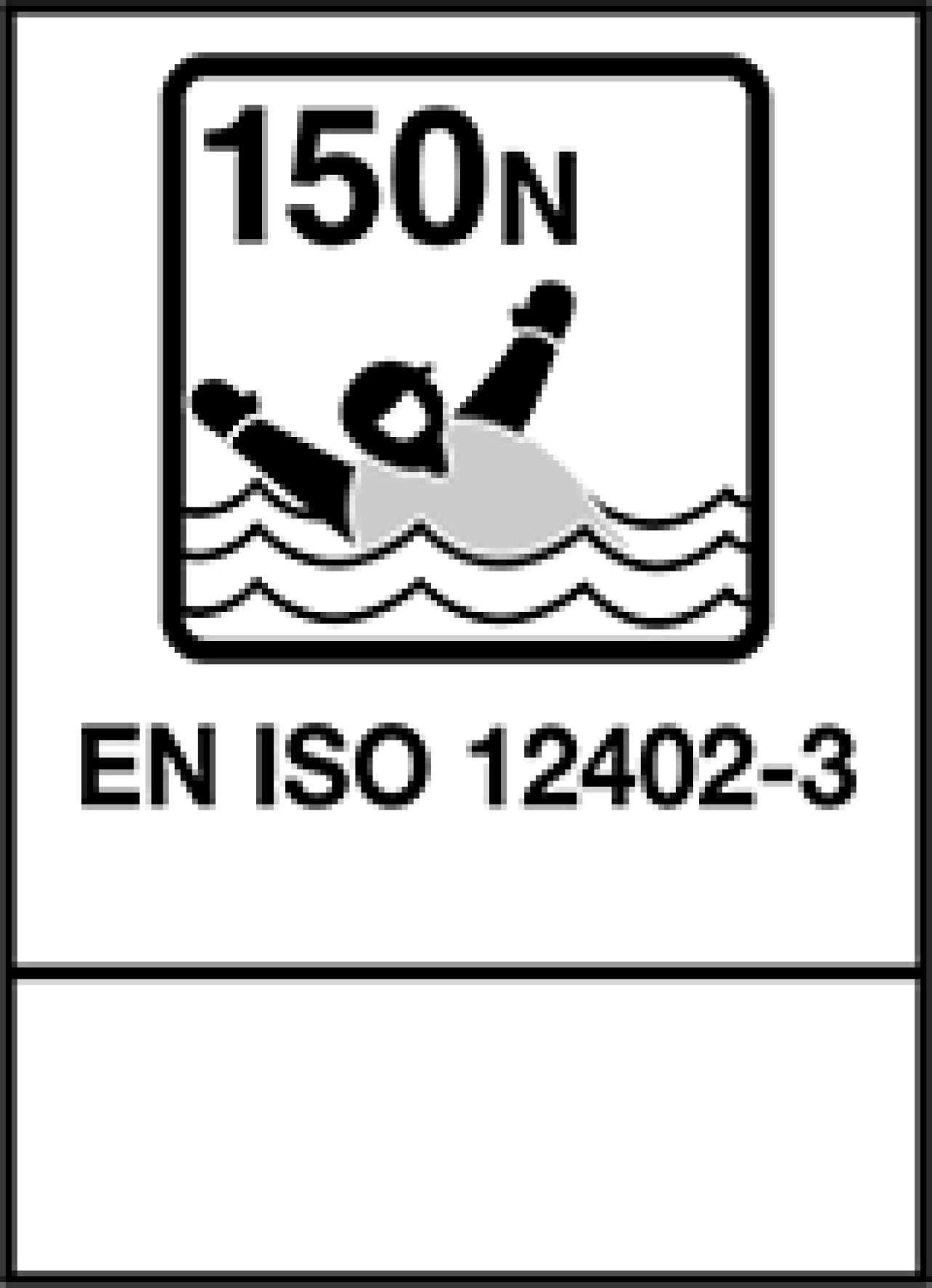
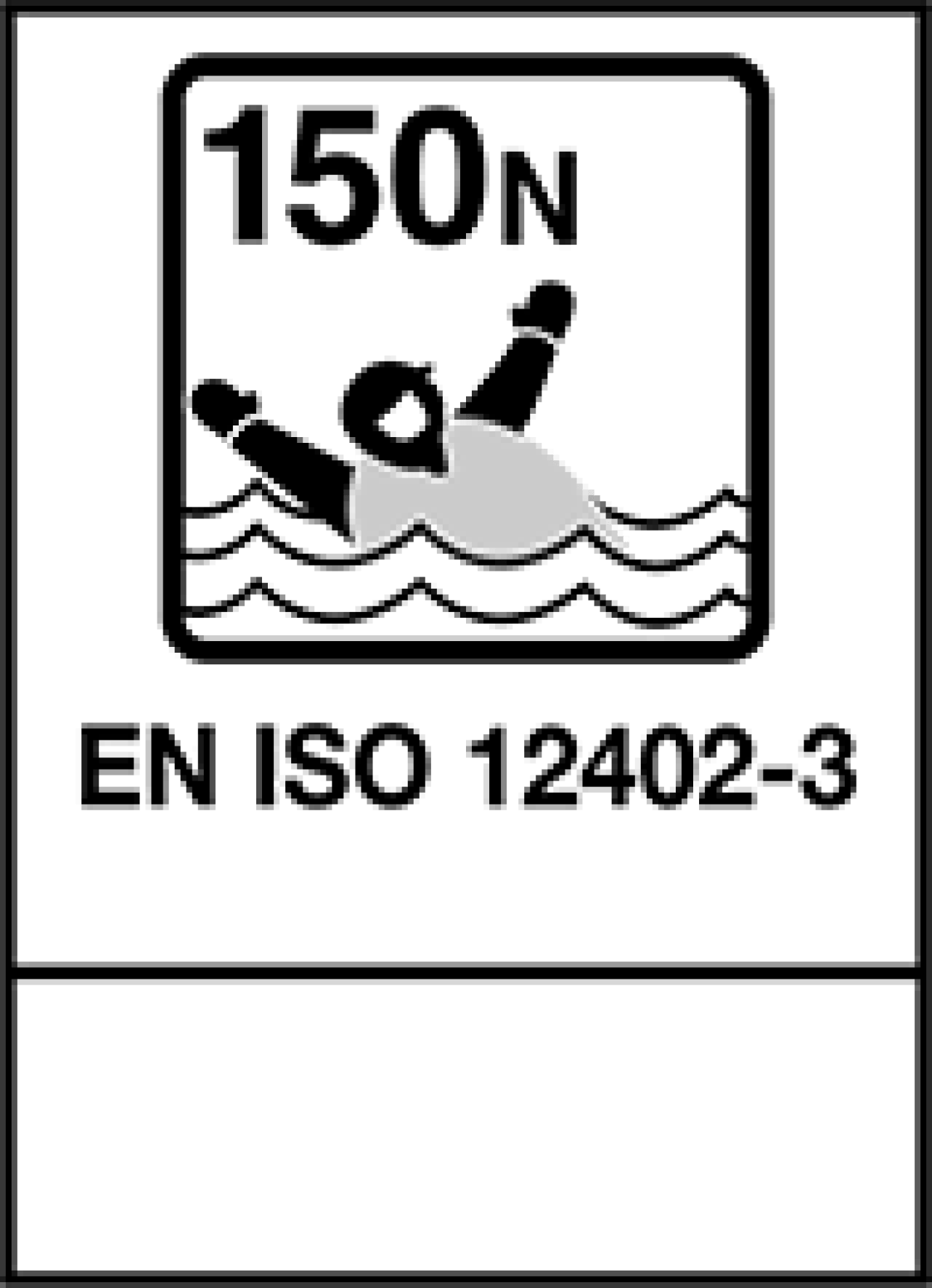


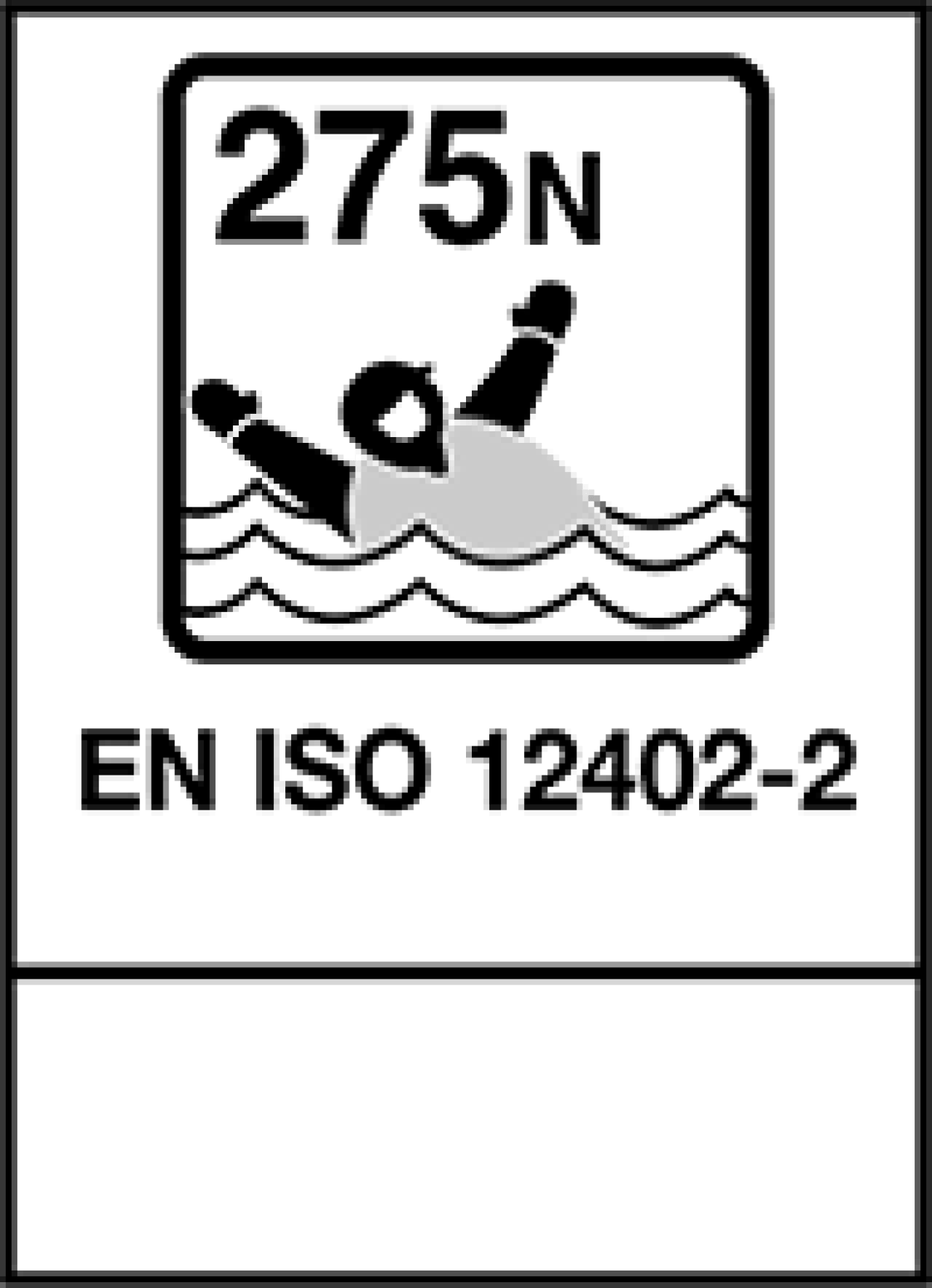

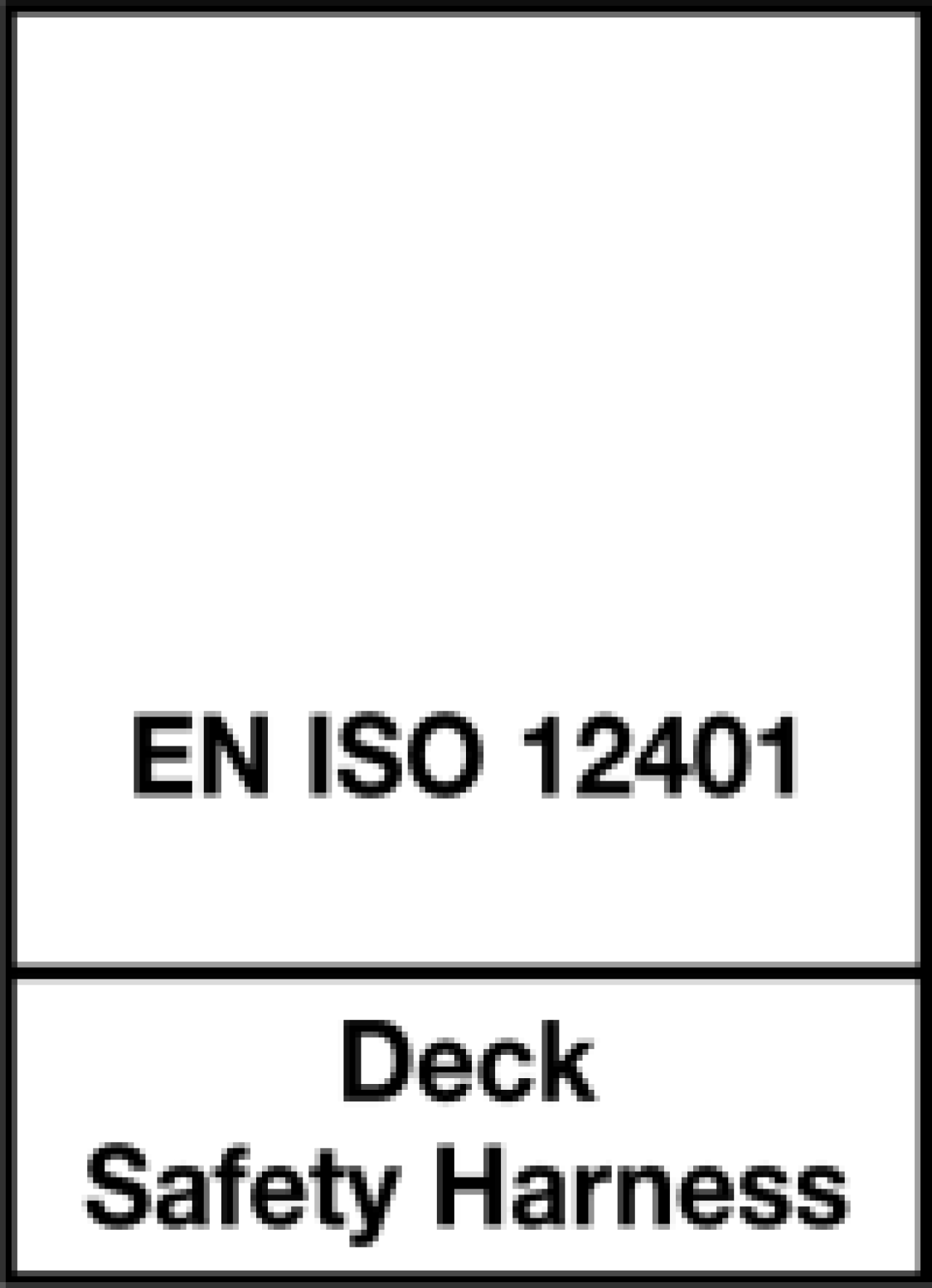

Lifejacket Buoyancy Levels
Buoyancy determines how well a lifejacket will keep a person afloat in the water and can vary based on the specific needs and activities of the wearer. Understanding the different buoyancy levels available in lifejackets is essential for selecting the appropriate equipment for any given situation when in the water, or out at sea.
50N Buoyancy Level
Level 50 buoyancy aids are suitable for individuals who are proficient swimmers and intend to engage in water-based activities in calm, sheltered areas or near assistance. However, they are not intended to provide adequate buoyancy for individuals who are incapable of helping themselves or turning a person from a face-down position in water. It is important to ensure that the appropriate level of buoyancy aid is selected based on the individual's swimming ability, the intended use, and the water conditions.
100N Buoyancy Level
A level 100 lifejacket is suitable for individuals engaging in water activities in sheltered and calm waters. However, it may not provide enough buoyancy to support a person who is unable to assist themselves, nor can it guarantee to roll an unconscious person onto their back. It is essential to consider the intended use, the water conditions, and the individual's swimming ability when selecting the appropriate level of lifejacket. It is crucial to prioritize safety and be aware that a lifejacket is not a substitute for proper training and awareness of water safety practices.
150N Buoyancy Level
A level 150 lifejacket is suitable for individuals who require a high level of performance and safety when engaging in water activities in coastal and offshore waters. It is designed to turn an unconscious person onto their back and keep their face out of the water without requiring any additional action from the wearer. However, it is important to note that the lifejacket's performance may be impacted if the wearer is wearing heavy or waterproof clothing. It is crucial to carefully consider the intended use and water conditions when selecting a lifejacket and to ensure that the wearer receives appropriate training on how to use the equipment correctly. A level 150 lifejacket provides an added level of safety and reassurance for those participating in water-based activities, or working in more challenging environments.
275N Buoyancy Level
A level 275 lifejacket is suitable for individuals engaging in offshore activities, particularly in extreme conditions, and for those wearing heavy protective clothing that may negatively impact the self-righting capacity of other lifejackets. This lifejacket is designed to ensure that the wearer maintains the correct floating position with their mouth and nose clear of the water surface. It is important to select the appropriate level of lifejacket based on the individual's intended use and the water conditions. A level 275 lifejacket provides a high level of safety and is recommended for individuals participating in activities in more challenging offshore environments. However, it is important to note that a lifejacket is not a substitute for proper training and awareness of water safety practices.
Lifejacket Servicing
It is highly recommended to have your lifejackets serviced annually by the manufacturer or a qualified service agent to ensure their proper function. Wear and tear, as well as exposure to salt spray, sand, and dirt, can reduce the lifespan of your lifejacket. Proper maintenance is crucial in ensuring that your lifejacket is ready to perform when needed. By taking good care of your lifejacket, you are also taking care of yourself and ensuring your safety when engaging in water-based activities, or working in marine enviroments. Make sure to follow the manufacturer's instructions for proper maintenance and storage to maximize the lifespan of your lifejacket.
I.C. Brindle is a certfied Lifejacket Service Station - Request your FREE Quote Today!
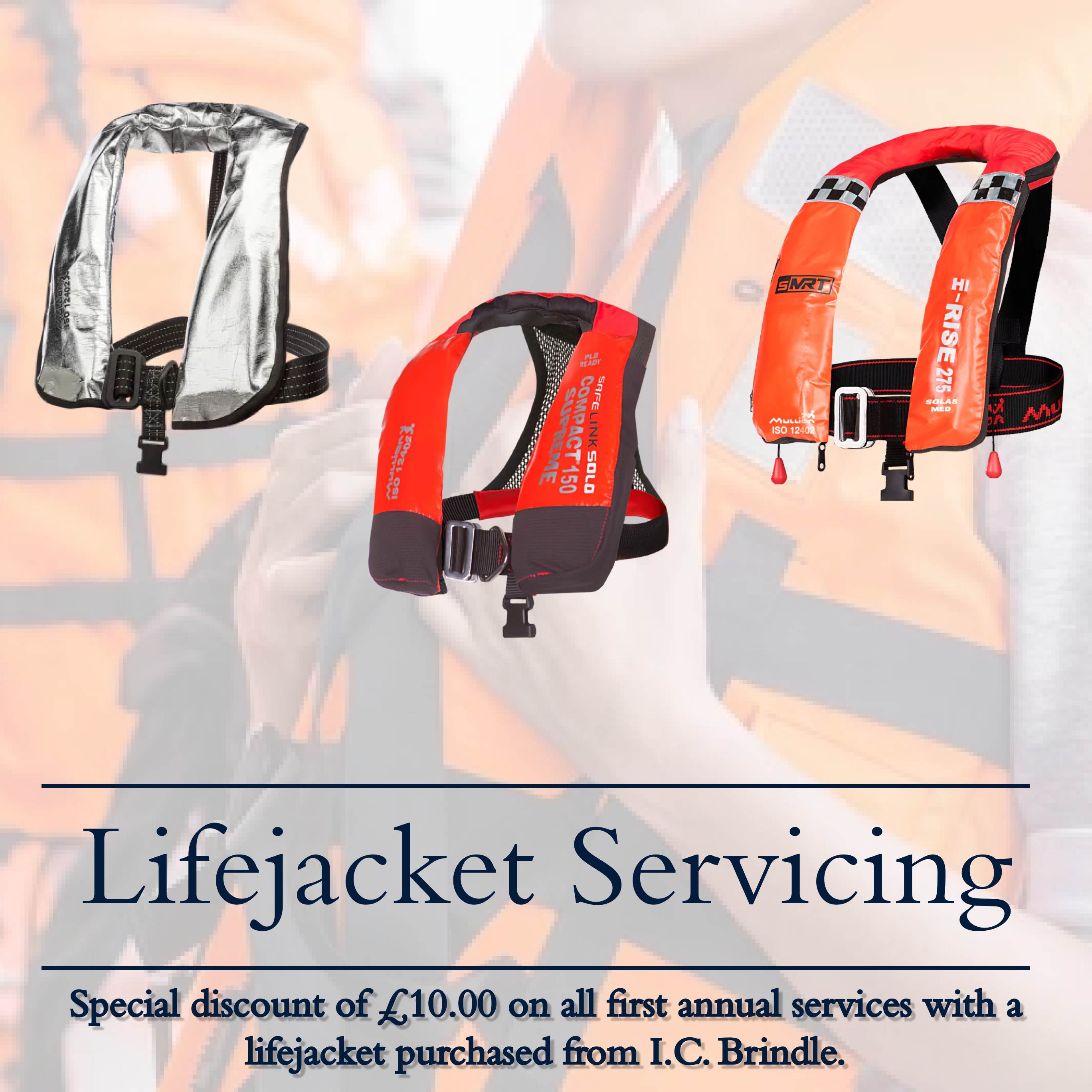

Lifejacket Accessories: Lifejacket Lights
A lifejacket light is an important safety device attached to your inflatable lifejacket or PFD. It is designed to activate automatically when it comes into contact with water and helps to attract attention in low light conditions, aiding rescue efforts by crew or emergency services. It is important to note that not all lifejackets come equipped with a lifejacket light as a standard feature, so it is crucial to check whether your lifejacket requires the purchase of this attachment.
It is highly recommended to have a lifejacket light installed on your lifejacket, especially when engaging in water activities during low light conditions or at night, as it can significantly increase your chances of being found in an emergency situation.
You can purchase SOLAS Lifejacket Lights seperatly from I.C. Brindle
Do you Need a Lifejacket Light?
Simply, Yes. And we would recommend this.
Why? Lights on lifejackets are a legal requirement for certain passenger vessels operating on specific waterways.
This requirement can be found under MGN 627 (M) of The Merchant Shipping (Safety Standards for Passenger Ships on Domestic Voyages) (Miscellaneous Amendments) Regulations 2022. These regulations, also known as "Grandfather Rights", were signed into law on December 7th, 2022, and will come into effect on December 29th, 2022. There will be a two-year phasing period to allow for compliance.
You should note that this requirement only applies to certain passenger vessels operating on specific waterways, and individuals should always check the regulations and requirements specific to their situation to ensure compliance with all relevant laws and regulations related to water safety.
For example, Article 2.3 of MGN 627(M) requires lifejackets on passenger vessels operating on Category C and D waters to be fitted with lights. The MCA may consider issuing an exemption from this requirement if the vessel does not sail more than one hour before sunrise or after sunset, and the restriction is recorded on the passenger ship safety certificate. However, this exemption will only be granted if the MCA is satisfied that adequate arrangements have been made to ensure the vessel can be returned to a berth in deteriorating daylight conditions, as recorded in the ship's Domestic Safety Management system.
On a more rational note, besides specific lawful requirements, why would you choose not to ensure that your lifejacket is equipped with a light? In a Man Overboard (MOB) situtation at night, in cold water and harsh weather, having a lifejacket light on your personal flotation device will increase the likelihood of rescue services finding you from a distance — this could be the difference to being found alive or critical...or worse.
SOLAS Lifejacket Light Requirements
Lifejacket lights should comply with SOLAS approval to ensure the best possible standard:
- The light must have a minimum intensity of 0.75 Candela (cd) in all directions of the upper hemisphere
- The energy source must provide a light intensity of 0.75 cd for at least 8-10 hours
- The light should be noticeable on the same large segment of the upper hemisphere as possible when attached to a lifejacket
- The light should be white to avoid confusion with other lights in open water, such as aircraft reflections
- If the light is flashing, it should be provided with a manually operated switch
- The light should flash with a speed of at least 50 and no more than 70 flashes per minute with an effective luminous intensity of not less than 0.75 cd.
If the above-mentioned fire is flashing, then it should, in addition:
- Provided by a manually operated switch;
- Flash with a speed of at least 50 flashes and no more than 70 flashes per minute with an effective luminous intensity of not less than 0.75 cd
Conclusion
Lifejackets are crucial for safety during domestic voyages on the water. They provide the necessary buoyancy to keep a person afloat, even if they are unconscious, thereby minimizing the risk of drowning. Legal requirements exist for the carriage of lifejackets on domestic vessels, and it is highly recommended to wear them while on the water.
Lifejackets are available in various buoyancy levels such as 150N and 275N — selecting the appropriate type of lifejacket, and it's corresponding buoyancy level for the activity, application and water conditions is essential for maximising safety, and ensuring comfort.






